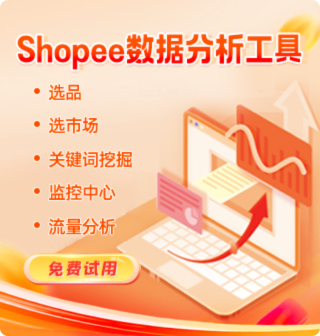-
用户165****2311
Shopee Singapore: An In-Depth Exploration of the Island Nation’s Leading E-commerce Platform
Shopee Singapore has firmly established itself as one of the leading online marketplaces in the country, reflecting the rapid digital transformation and evolving consumer behaviors in the region. Since its launch, Shopee has revolutionized how Singaporeans shop online by offering convenience, a vast product range, and innovative features tailored to local preferences. This article provides a detailed overview of Shopee Singapore, its operational strategies, market context, and practical insights for both consumers and sellers.
1. Market Context and Shopee’s Entry into Singapore
Singapore is a highly developed digital economy with one of the highest internet penetration rates globally, exceeding 90%. The country’s tech-savvy population, superior logistics infrastructure, and widespread digital payment adoption create an ideal environment for e-commerce growth.
Shopee launched in Singapore in 2015, focusing initially on mobile users. Its localized approach — understanding consumer habits, payment preferences, and regulatory requirements — has helped it rapidly gain market share alongside competitors such as Lazada, Qoo10, and Amazon.sg.
2. Key Features of Shopee Singapore
Mobile-First and User Experience:
Shopee Singapore’s app and website offer a clean, intuitive interface optimized for smartphones. The platform employs AI-driven product recommendations and personalized search filters, enhancing the overall shopping journey.
Wide Product Selection:
Shopee Singapore hosts millions of listings ranging from electronics, fashion, beauty, home appliances, groceries, to niche categories like collectibles and local artisanal products. Both established brands and small businesses use Shopee as a sales channel.
Payment Options:
Shopee supports multiple payment methods suited to Singapore’s cashless society, including credit/debit cards, PayNow, GrabPay, and ShopeePay (Shopee’s e-wallet). While cash on delivery (COD) is less common in Singapore than in other Southeast Asian countries, Shopee offers it selectively to meet some customer preferences.
Fast Delivery and Logistics:
Leveraging Singapore’s advanced logistics network, Shopee provides same-day or next-day delivery options for many products. Shopee partners with local couriers and uses fulfillment centers to ensure timely and reliable shipping.
Shopee Live and Social Commerce:
Interactive features such as Shopee Live streaming allow sellers and influencers to engage directly with buyers, demonstrate products, and offer exclusive deals — driving higher engagement and conversion rates.
3. Shopee Singapore Seller Ecosystem
Shopee Singapore supports a vibrant seller community, from individuals and SMEs to official brand stores.
Seller Center: This centralized dashboard allows sellers to manage product listings, track orders, analyze sales data, and access marketing tools.
Marketing and Advertising: Sellers can leverage Shopee Ads, participate in flash sales, and utilize vouchers to attract customers.
Cross-Border Selling: Shopee enables Singapore-based sellers to reach buyers in neighboring countries via cross-border shipping solutions.
Education and Support: Shopee regularly organizes webinars and training sessions to help sellers optimize their presence on the platform and comply with regulations such as the Personal Data Protection Act (PDPA).
4. Consumer Protection and Policies
Shopee Singapore has implemented strict policies to build consumer trust:
Buyer Protection Program: Ensures refunds or returns for products that are defective, not as described, or not delivered.
Verified Sellers and Shopee Mall: Consumers can shop confidently from verified official stores offering authentic products and reliable service.
Return and Refund Policies: Transparent and user-friendly return processes are available, typically within 7 to 14 days depending on the product category.
Data Privacy: Shopee adheres to Singapore’s PDPA requirements, safeguarding user data and transaction security.
5. Shopee Singapore’s Growth Drivers and Challenges
Growth Drivers:
- Mobile and Social Commerce: High smartphone penetration and social media engagement fuel Shopee’s ecosystem.
- Localized Promotions: Campaigns aligned with local festivals (e.g., National Day, Great Singapore Sale) generate spikes in sales.
- Digital Payments: The widespread adoption of e-wallets and QR payments supports seamless transactions.
- Logistics Efficiency: Singapore’s compact geography and advanced infrastructure enable fast delivery, a key competitive advantage.
Challenges:
- High Competition: Shopee faces strong competitors such as Lazada, Qoo10, and regional players expanding into Singapore.
- Customer Expectations: Singaporean consumers expect premium service levels, fast delivery, and authentic products, requiring continuous operational excellence.
- Regulatory Compliance: Sellers must navigate regulations including customs, consumer protection laws, and data privacy standards.
6. Practical Tips for Shopee Singapore Users
For Buyers:
- Use ShopeePay for exclusive discounts and cashback.
- Take advantage of flash sales and seasonal promotions to maximize savings.
- Check seller ratings and reviews before making purchases.
- Engage with sellers via Shopee Live or chat for additional information.
- Understand the return policies before finalizing high-value purchases.
For Sellers:
- Optimize product listings with high-quality images and detailed descriptions tailored to Singaporean preferences.
- Participate in Shopee’s key campaigns and leverage Shopee Ads for better visibility.
- Maintain excellent customer service to enhance ratings and build trust.
- Monitor inventory closely to avoid stock-outs during high demand periods.
- Stay updated with local regulations and Shopee’s policy changes.
7. Future Outlook for Shopee Singapore
With Singapore’s digital economy poised for further growth, Shopee is expected to continue innovating its platform. Areas of focus likely include:
Enhanced AI and Personalization: Improving product discovery and customized marketing.
Fintech Expansion: Broader use of ShopeePay for payments, credit, and insurance products.
Sustainability Initiatives: Eco-friendly packaging and greener logistics solutions.
Omni-channel Integration: Bridging online and offline retail experiences.
Regional Integration: Leveraging Singapore as a hub for cross-border e-commerce in Southeast Asia.
Conclusion
Shopee Singapore’s success stems from its ability to adapt global e-commerce best practices to the local market’s unique characteristics. By offering a seamless mobile experience, a wide product variety, reliable logistics, and strong seller support, Shopee has become a preferred online shopping destination for Singaporeans.
For sellers, Shopee provides a valuable platform to access a digitally connected consumer base, while buyers enjoy convenience, competitive prices, and buyer protection. As the e-commerce landscape evolves, Shopee Singapore’s continued innovation and localization will be key factors in sustaining its leadership in this dynamic market.

